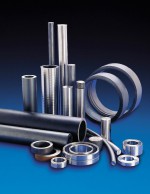New surface tolerant technology solves maintenance dilemma
Published: 09 October, 2015
A UK oil supplier was faced with a major dilemma when a transformer oil storage tank began to leak in several places. As the tank was located in a confined space, it would be highly dangerous to repair the damage in-situ using hot work. If the tank was removed and repaired offsite, not only would this incur large amounts of downtime, but the cost of welding alone would be over £15,000.
The supplier required a bespoke in-situ repair solution that would safely repair and protect the steel tanks against corrosive attack for the long-term, while incurring minimum downtime. In addition to this, as the application area was highly contaminated with oil, the repair method needed to be compatible with this environment and provide a robust repair solution despite the contaminated surface.
The supplier recycles millions of litres of transformer oil every year. This process works by extracting the moisture from recycled oil by shutting the tanks off from the atmosphere. The tanks are then connected to silica gel tanks to remove the moisture. As a result of this repeated process, several areas located at the seams of the steel tanks were beginning to corrode.
Application specification
Belzona 1212 was chosen to bond steel plates to the damaged areas followed by a protective coating using Belzona 5831 (ST-Barrier). Launched earlier this year. Belzona says its 1212 epoxy technology provides excellent, long-term corrosion resistance, and can be applied to oil contaminated surfaces where grit blasting is not possible. Coupled with the rapid cure feature ensuring minimal downtime, Belzona 1212 was a good solution to repair the leaking tank. In addition Belzona 5831 was chosen to coat the repaired area as this surface tolerant epoxy coating is specially designed for the protection of oil contaminated surfaces.
The application was carried out by Belzona Technosol, Belzona’s application services division. Once the leaks were stemmed, the area was then cleaned and roughened to prepare the surface for the Belzona systems. Belzona 1212 was used to bond pre-manufactured steel plates onto the damaged areas. This was done by firstly applying a thin film of the epoxy system onto the prepared substrate, pushing the material well into the profile. Further material was then applied to the steel patch forming a peak of material at the centre. The patch was then pushed into place allowing the excess material to exude from beneath ensuring minimal air entrapment. The excess material was then removed and the system was allowed to cure before coating the area with Belzona 5831, providing long-term corrosion protection.
In-situ repair
Osian Jones, Belzona field sales engineer commented: “If the oil supplier had chosen to use welding as the repair method, this could have taken weeks to complete, leading to big problems in terms of trying to stop moisture entering the tanks. The Belzona application was completed in just over two days without the tanks being taken offline. This ensured moisture ingress would not occur and allowed the plant to continue as normal with minimal disruption. Furthermore, the supplier was able to avoid a significant amount of capital expenditure as the Belzona repair method could be carried out at a fraction of the cost of welding.”
For further information please visit: www.belzona.com





 OVAKO is among the exhibitors at this year’s SPE Offshore Europe in Aberdeen, UK, where it says it will demonstrate how excellent yield, tensile and high impact strength and uniform properties in its high quality engineering steels can address the technical challenges facing today’s oil and gas industry.
OVAKO is among the exhibitors at this year’s SPE Offshore Europe in Aberdeen, UK, where it says it will demonstrate how excellent yield, tensile and high impact strength and uniform properties in its high quality engineering steels can address the technical challenges facing today’s oil and gas industry.
